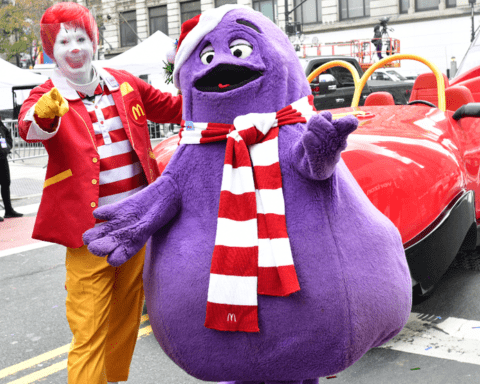californianewstimes.com – Twenty-one people were shot and killed on July 18, 1984. At the time, it was the largest mass shooting in U.S. history. Southwestern College’s Higher Education Center now sits where the McDonalds was.
The massacre, the most deadly shooting by a lone shooter in US history at the time, influenced long-standing speculation about movies, books, and whether police handled the situation properly.
However, those involved in the tragedy focused on hope and healing on Sunday, building a small community college campus on the premises and building an exciting marble monument to the victims at the entrance.
“Like they say in the movie Coco, as long as people remember them, they’re still alive,” said Gloria Salas, a San Ysidro resident who helped turn the shooting site into a memorial to the victims.
Salas remembers being saddened 37 years ago when she learned the restaurant was planning to reopen after the shooting. She knew one of the boys who died, 11-year-old Daniel Flores. Daniel was riding his bike to McDonalds to get an ice cream cone.
Salas led a protest and petition drive, to turn the site into a memorial. She convinced the late Joan Kroc, who inherited the McDonald’s fortune, to donate the land.
“She came in person to tell us she was going to give us the property. This was for the community of San Ysidro,” said Salas.
Thirty-seven years later Adriana Wright is honoring the memory of multiple loved ones she lost, including her sister Jackie Wright, and her nephew Carlos Reyes.
Southwestern University, which operates a 12,000-square-foot campus annex, helped coordinate the annual Sunday Memorial Ceremony.

“This is a day to live forever in our hearts,” said director Mark Sanchez. “We mourn and mourn the entire community, but we also hope that our institution can stand as a symbol of victory over tragedy, hope for helplessness, and love for loss. . “
Saras turned the scrapbook page on Sunday, cutting news about the slaughter and petitions with over 1,000 signatures collected to prevent McDonald’s from reopening on the site.
“I heard that McDonald’s will resume in two days, but I thought it wasn’t right,” Saras said on Sunday.
Instead, the fast food chain opened a new restaurant a few blocks away and donated the site to the community. On Sunday, Saras praised Joan Kroc, then McDonald’s owner and San Diego philanthropist until his death in 2003.
McDonald’s also donated $ 1 million to the Survivors Fund to cover counseling and financial assistance for relatives of the deceased.
According to Saras, community leaders said after some debate, the university campus with the monument was 460 West San Ysidro Blvd, sandwiched between a donut shop and the US Post Office near the border. Judging that it is most suitable for small land in
The campus opened just a few years after the slaughter, but the monument wasn’t announced until 1990, allowing us to consider a variety of proposals.
The final choice was a sculpture by former Southwestern University student Roberto Valdes. He said that the different heights of the pillars represent many different races of victims, in addition to different heights.
“They are united together in the hope that the community will stick like them in such a tragedy,” he said when the monument was dedicated.
While some lobbyed for a more elaborate monument to attract more attention, Saras said community leaders chose what they thought was realistic.
“People want a lot, but they don’t do anything. They just talk,” she said.
Mr. Saras said he hoped the monument would get more attention from city leaders and the press, and expressed dissatisfaction with many Southwestern University students passing by unknowingly.
“Even the kids who come to college don’t know about it,” she said.
In front of the monument is a plaque bearing the names of the 21 people who died that day, but not the name of the shooter James Huberty.
Saras pointed down the street on Sunday towards Hooverty’s apartment, just a few blocks from the grounds of Aberyl Road. Huberty sought help with a mental illness before the shooting. His wife said in a later interview that when he left their apartment, he said to her, “I’m going hunting … I’m looking for a human.”
The victim’s proceedings against McDonald’s and police were finally dismissed, and the court declared the massacre unpredictable and unpreventable.
The slaughter has become a test case for San Diego and SWAT teams across the country. After the massacre, San Diego strengthened its training methods and changed the weapons used by the team.
According to Saras, Sunday’s anniversary was relatively modest, partly because it was the 37th anniversary. She said community leaders and survivor relatives usually focus on milestone anniversaries such as the 25th and 35th.






